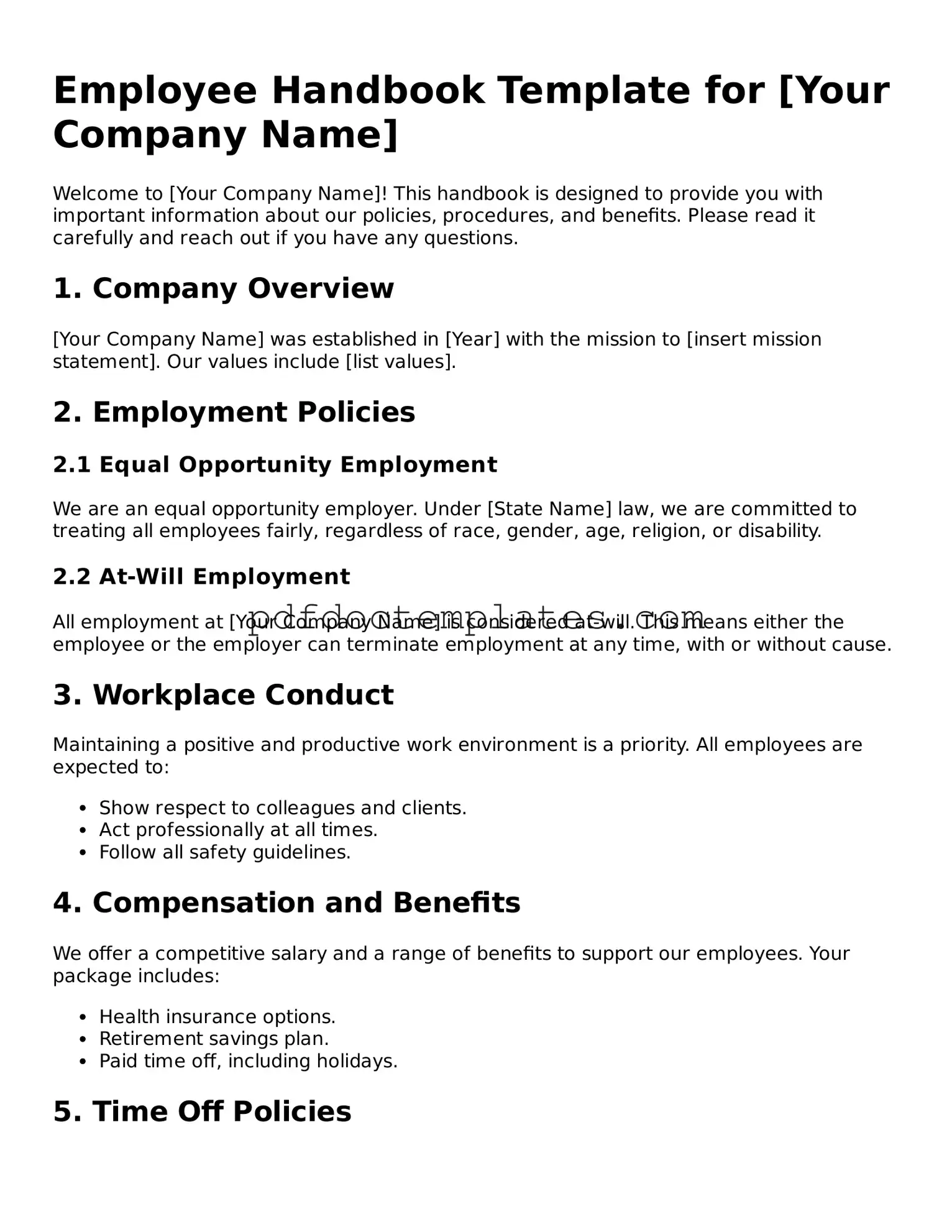Employee Handbook Template for [Your Company Name]
Welcome to [Your Company Name]! This handbook is designed to provide you with important information about our policies, procedures, and benefits. Please read it carefully and reach out if you have any questions.
1. Company Overview
[Your Company Name] was established in [Year] with the mission to [insert mission statement]. Our values include [list values].
2. Employment Policies
2.1 Equal Opportunity Employment
We are an equal opportunity employer. Under [State Name] law, we are committed to treating all employees fairly, regardless of race, gender, age, religion, or disability.
2.2 At-Will Employment
All employment at [Your Company Name] is considered at-will. This means either the employee or the employer can terminate employment at any time, with or without cause.
3. Workplace Conduct
Maintaining a positive and productive work environment is a priority. All employees are expected to:
- Show respect to colleagues and clients.
- Act professionally at all times.
- Follow all safety guidelines.
4. Compensation and Benefits
We offer a competitive salary and a range of benefits to support our employees. Your package includes:
- Health insurance options.
- Retirement savings plan.
- Paid time off, including holidays.
5. Time Off Policies
Employees are encouraged to take the time off they need for personal matters. Our policies include:
- Paid Time Off (PTO): Employees accrue PTO based on their length of service.
- Holiday Leave: We observe [list holidays].
- Sick Leave: Employees are entitled to [insert sick leave policy].
6. Additional State-Specific Policies
In compliance with [State Name] laws, we adhere to specific regulations regarding:
- Employee rights and workplace safety.
- Family and medical leave.
- Minimum wage and overtime rules.
7. Acknowledgment of Receipt
Please sign and return the acknowledgment form to confirm that you have received and understood this handbook:
Employee Name: __________________
Date: __________________
